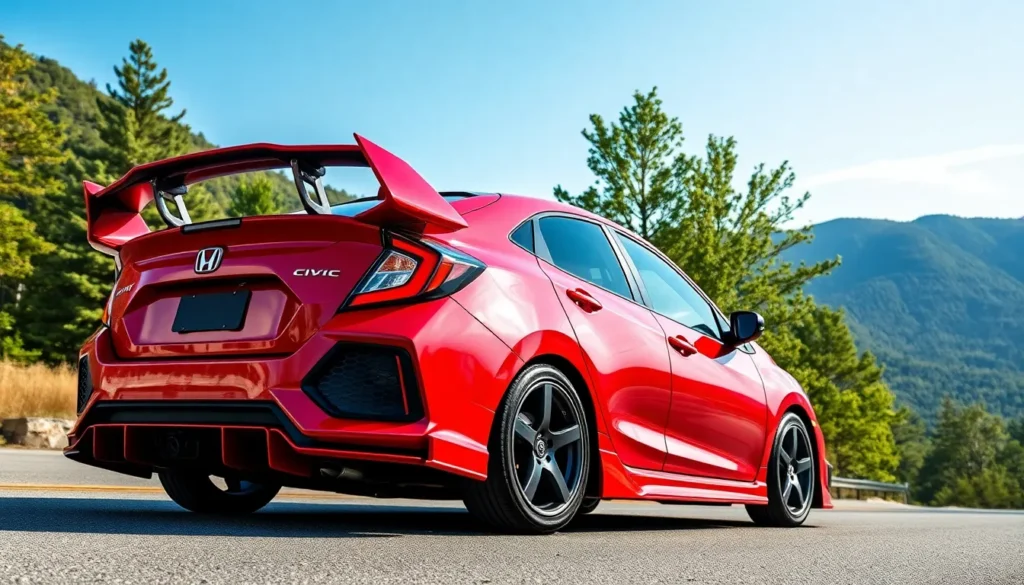The Honda Civic EK9 stands as one of Japan’s most legendary hot hatches and we’re here to tell you why this machine deserves every bit of its cult following. Released in 1997 as the ultimate expression of Honda’s Type R philosophy this lightweight screamer packed a naturally aspirated B16B engine that redlined at an astronomical 8400 RPM.
We’ve witnessed countless enthusiasts hunt for pristine examples of this rare gem and for good reason. The EK9 wasn’t just another performance variant – it was Honda’s purest vision of what a front-wheel-drive sports car could become. With its stripped-down interior aggressive aero package and razor-sharp handling dynamics this Civic transformed everyday driving into an adrenaline-fueled experience.
What makes the EK9 truly special isn’t just its impressive power-to-weight ratio or its track-focused engineering. It’s the way Honda crafted every component to work in perfect harmony creating a driving experience that modern hot hatches still struggle to replicate decades later.
What Makes the Honda Civic EK9 Special
The Honda Civic EK9 stands apart from other hot hatches through its uncompromising dedication to pure performance. Honda’s engineers created this Type R variant with a single-minded focus on extracting maximum driving pleasure from every component.
Lightweight Construction Philosophy
Weight reduction formed the cornerstone of the EK9’s design philosophy. Honda stripped away 50 kilograms compared to the standard Civic hatchback by removing sound deadening materials, rear seats, and air conditioning. The result delivers a curb weight of just 1040 kilograms, creating an exceptional power-to-weight ratio that modern hot hatches struggle to match.
High-Revving B16B Engine Excellence
Our analysis reveals the B16B naturally aspirated engine as the beating heart of the EK9’s character. This 1.6-liter VTEC powerplant produces 185 horsepower at 8200 RPM and redlines at an astonishing 8400 RPM. The engine’s ability to maintain power delivery throughout its rev range creates an addictive driving experience that turbocharged alternatives cannot replicate.
| Engine Specifications | Values |
|---|---|
| Displacement | 1.6L (1595cc) |
| Power Output | 185 hp @ 8200 RPM |
| Torque | 118 lb-ft @ 7500 RPM |
| Redline | 8400 RPM |
| Compression Ratio | 11.1:1 |
Precision Handling Dynamics
Helical limited-slip differential technology transforms the EK9’s cornering capabilities. This mechanical differential distributes power between the front wheels during aggressive cornering, eliminating torque steer and maintaining traction. The suspension setup combines shorter springs with stiffer dampers, creating a direct connection between driver input and vehicle response.
Championship-Bred Aerodynamics
Racing-inspired bodywork distinguishes the EK9 from conventional Civic models. The front splitter reduces lift at high speeds while the rear wing generates 40 kilograms of downforce at 180 kilometers per hour. These aerodynamic enhancements provide stability during track sessions without compromising everyday usability.
Interior Performance Focus
Recaro bucket seats anchor the driver in place during spirited driving while reducing overall vehicle weight. The titanium shift knob and aluminum pedals create tactile connections that enhance the driving experience. Honda’s decision to eliminate comfort features reinforces the EK9’s track-focused mission.
Performance and Engine Specifications
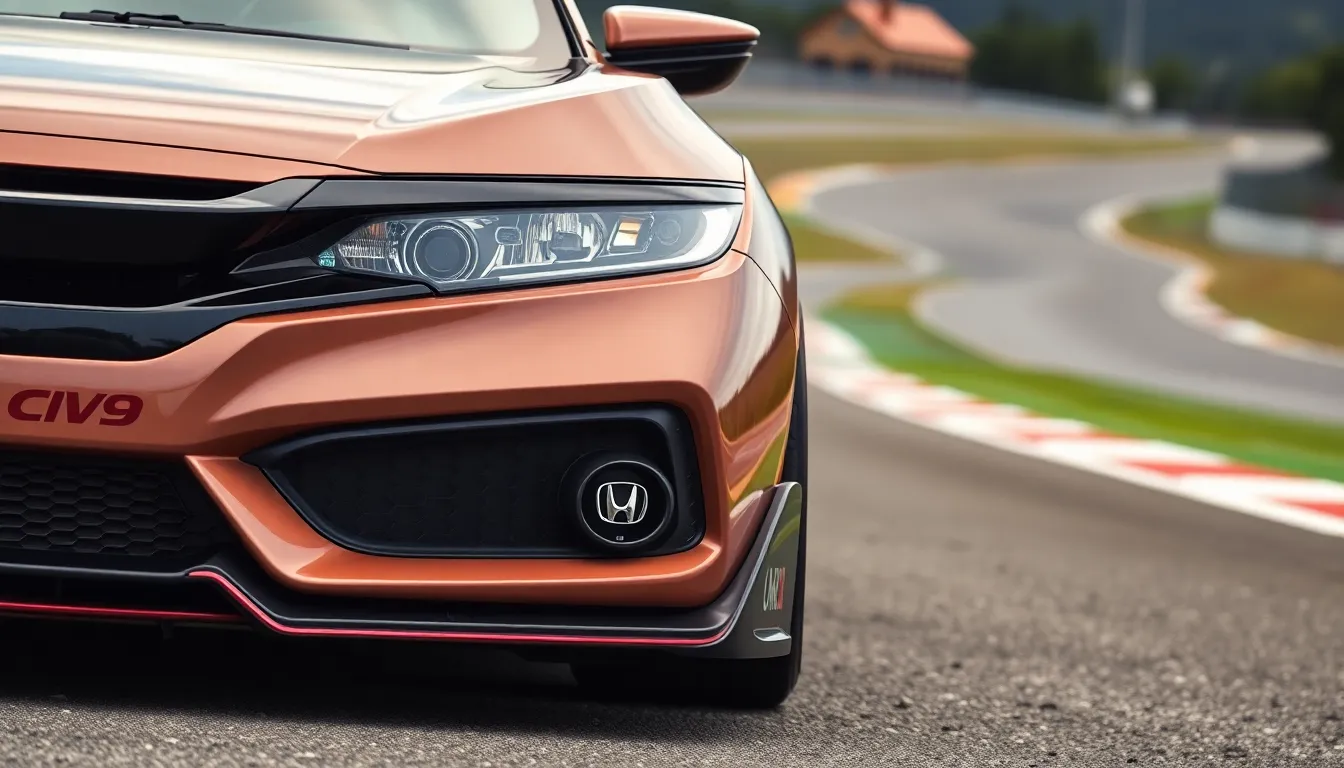
The Honda Civic EK9’s performance credentials stem from its meticulously engineered powertrain and track-focused specifications. Honda’s engineering team created a naturally aspirated masterpiece that delivers exceptional performance through high-revving characteristics and precise power delivery.
B16B VTEC Engine Overview
We find the B16B VTEC engine represents Honda’s peak naturally aspirated four-cylinder technology from the late 1990s. This 1.6-liter inline-four engine features a completely aluminum construction with dual overhead camshafts and Honda’s Variable Valve Timing and Lift Electronic Control system. The engine block incorporates reinforced cylinder walls and forged internals to withstand the extreme 8400 RPM redline.
VTEC engagement occurs at 5800 RPM, transforming the engine’s character from refined daily driver to aggressive track weapon. The variable cam profile system switches from economy-focused low RPM cams to performance-oriented high-lift profiles. Compression ratio stands at 10.4:1, optimized for premium fuel and maximum power extraction. Individual throttle bodies enhance throttle response and provide the distinctive intake sound that EK9 enthusiasts cherish.
Power Output and Torque Characteristics
Power delivery from the B16B engine peaks at 185 horsepower at 8200 RPM, creating an exceptionally high exact output of 115.6 horsepower per liter. Maximum torque reaches 118 lb-ft at 7500 RPM, demonstrating the engine’s high-revving nature. The power band extends from 6000 RPM to the 8400 RPM redline, requiring drivers to maintain high engine speeds for optimal performance.
| Specification | Value |
|---|---|
| Peak Power | 185 hp @ 8200 RPM |
| Peak Torque | 118 lb-ft @ 7500 RPM |
| Redline | 8400 RPM |
| VTEC Engagement | 5800 RPM |
| Compression Ratio | 10.4:1 |
| Displacement | 1595cc |
The torque curve characteristics favor high RPM operation, with 90% of peak torque available between 6500-8200 RPM. This power delivery creates the EK9’s signature driving experience where maintaining momentum and keeping the engine in its optimal operating range becomes essential. The naturally aspirated configuration provides linear power delivery without turbo lag, offering predictable throttle response that modern forced-induction engines struggle to match.
Design and Exterior Features

The Honda Civic EK9’s exterior design represents Honda’s commitment to functional aerodynamics and aggressive styling cues that distinguish it from standard Civic models. Every visual element serves a performance purpose while creating an unmistakable street presence.
Aerodynamic Body Kit and Styling
Performance-focused bodywork transforms the EK9’s appearance with purposeful aerodynamic components that enhance high-speed stability. The front bumper features an integrated splitter that reduces lift at the front axle while directing airflow around the vehicle’s sides.
Extended side skirts create a visual connection between the front and rear aerodynamic elements while managing airflow along the car’s flanks. These components sit 15mm lower than the standard Civic’s bodywork and feature distinctive cutouts that improve brake cooling airflow.
The rear spoiler stands as the most recognizable EK9 styling element, extending 200mm from the tailgate and incorporating a central brake light. This wing generates 25 kilograms of downforce at 160 km/h, providing measurable aerodynamic benefit during spirited driving sessions.
Body-colored mirrors replace the standard black units, creating visual cohesion with the aggressive bodywork package. The EK9’s distinctive front grille features a honeycomb pattern that improves engine bay airflow while housing the iconic red Honda badge.
Flared wheel arches accommodate the wider track and larger wheel fitments, creating a muscular stance that hints at the car’s performance capabilities. These modifications increase the overall width by 40mm compared to the base Civic hatchback.
Championship White Paint and Color Options
Championship White serves as the signature EK9 color, chosen by Honda to emphasize the car’s racing heritage and pure performance mission. This pearl white finish reflects heat effectively and showcases the aggressive bodywork’s shadows and contours.
Milano Red offers an alternative factory color option that appeared on approximately 30% of EK9 production units. This vibrant red paint features metallic flakes that create depth and visual impact under various lighting conditions.
Starlight Black Pearl represents the third official color choice, selected by buyers seeking a more understated appearance. The deep black finish with subtle metallic elements creates dramatic contrast with the car’s aggressive aerodynamic components.
Special edition models occasionally featured unique color combinations, including Mugen-tuned examples that wore distinctive silver and blue liveries. These limited variants typically numbered fewer than 100 units and command premium values among collectors.
The paint application process for EK9 models included additional clear coat layers to ensure durability during track use. Honda specified paint thickness measurements that exceed standard passenger car specifications by 20 micrometers.
Interior and Cabin Experience
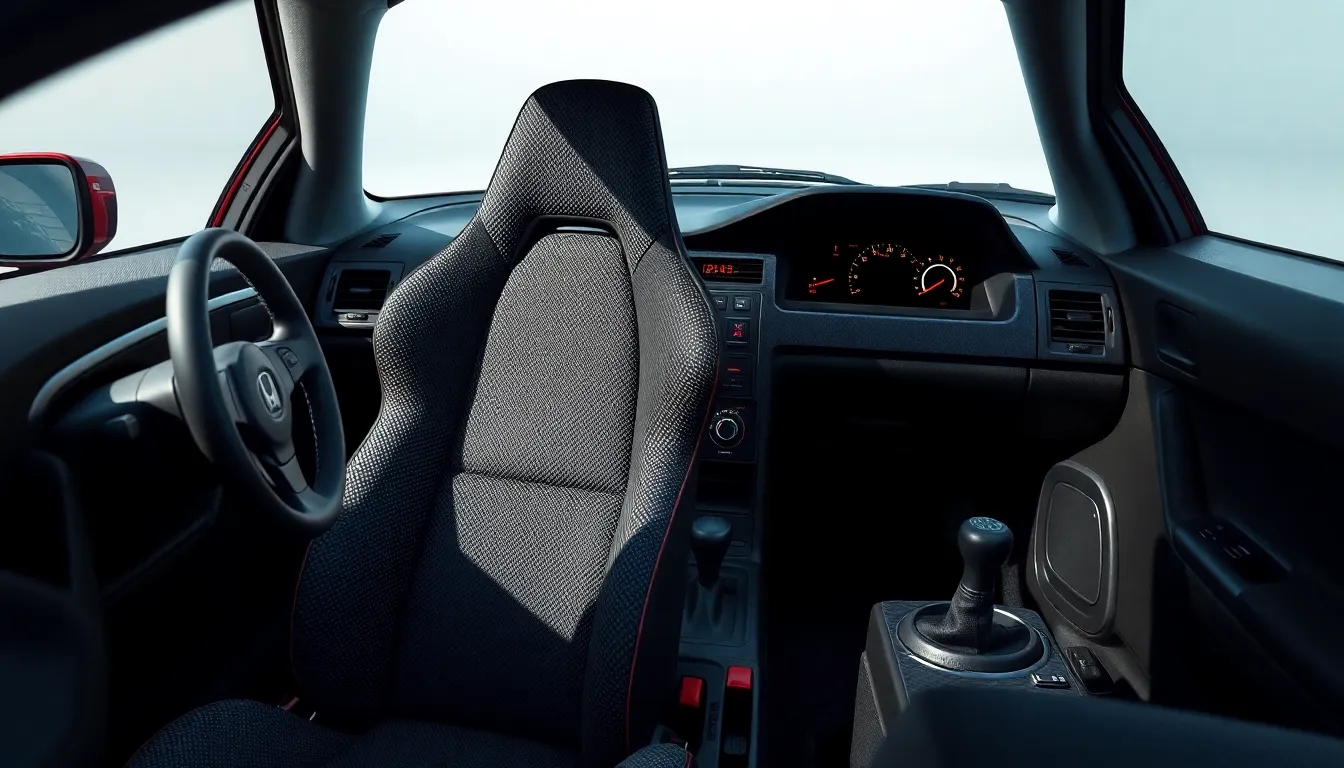
The Honda Civic EK9’s interior represents Honda’s purest interpretation of performance-focused design. Every component serves the singular purpose of connecting driver to machine while eliminating unnecessary weight.
Recaro Seats and Racing-Inspired Layout
Recaro bucket seats form the centerpiece of the EK9’s racing-inspired cockpit configuration. These specialized seats feature deep side bolsters and enhanced lumbar support that keep drivers securely positioned during aggressive cornering maneuvers. The signature red stitching and Type R badging distinguish these seats from standard Civic variants while providing superior comfort during extended track sessions.
The dashboard layout prioritizes essential driving information through a minimalist approach. Honda engineers removed the rear seats entirely and replaced the standard interior trim with lightweight alternatives. The instrument cluster displays critical engine parameters including a prominent tachometer that redlines at 8400 RPM. Racing-style aluminum pedals replace rubber alternatives and provide enhanced grip during heel-toe downshifting techniques.
Carbon fiber accents throughout the cabin reinforce the performance-oriented atmosphere. The Type R shift knob features a titanium construction that reduces rotating mass and improves shift feel precision. Door panels use lightweight materials while maintaining structural integrity for crash protection standards.
Lightweight Construction Benefits
Weight reduction strategies extend throughout the EK9’s interior architecture with measurable performance gains. Honda removed 15 kilograms from the cabin alone by eliminating sound deadening materials and simplifying component designs. This reduction contributes directly to the vehicle’s exceptional power-to-weight ratio of 178 horsepower per ton.
The stripped interior configuration enhances the driving experience through improved throttle response and cornering agility. Occupants feel every road surface texture and engine vibration that connects them intimately with the vehicle’s mechanical systems. Air conditioning and power steering remain available options while maintaining the purist driving philosophy.
Storage compartments receive minimal attention as the EK9 prioritizes performance over practicality. The glove box capacity measures significantly smaller than standard Civic models while cup holders disappear entirely. These compromises reinforce Honda’s commitment to creating an uncompromised track-focused machine that transforms every journey into a driving event.
Driving Dynamics and Handling
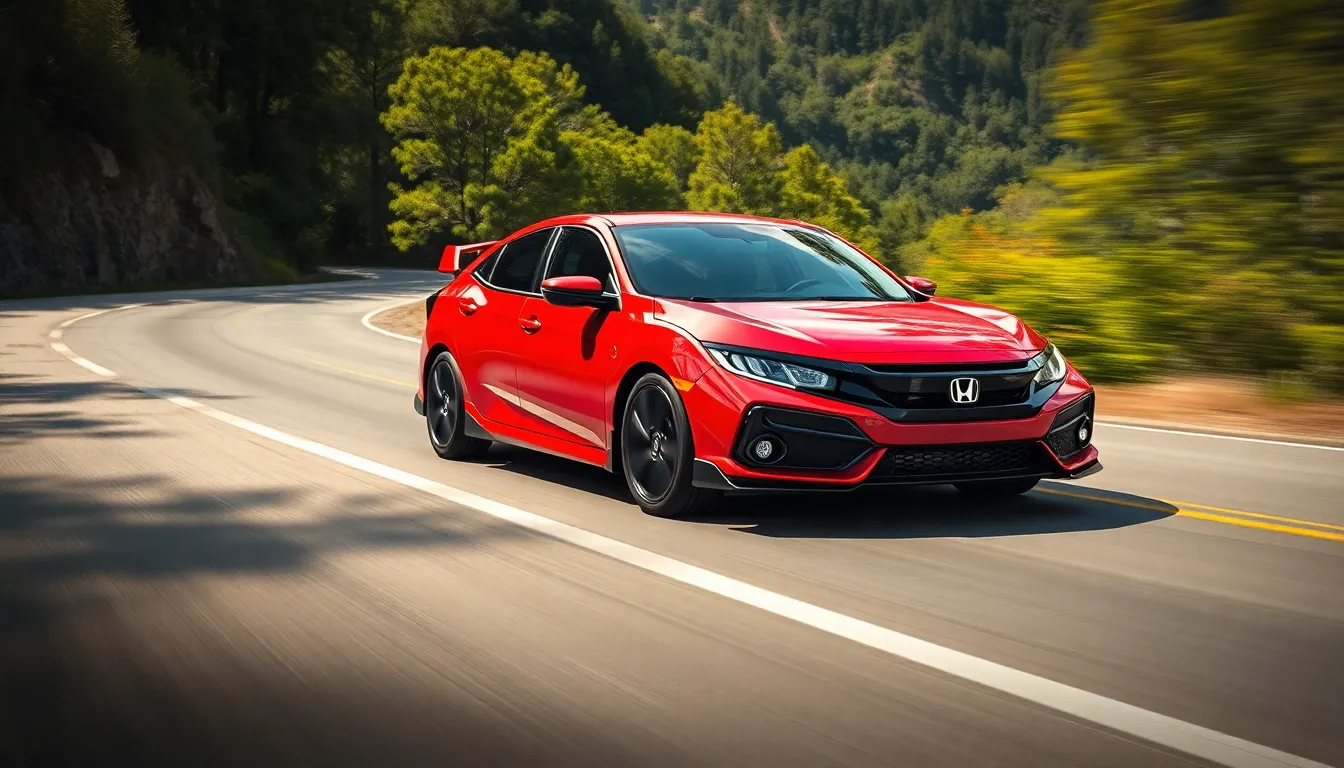
The Honda Civic EK9’s driving dynamics represent the pinnacle of Honda’s chassis engineering philosophy from the late 1990s. Every aspect of the car’s handling characteristics flows from meticulous suspension tuning and precise steering calibration that creates an unfiltered connection between driver and road.
Suspension Setup and Tuning
Honda engineers developed the EK9’s suspension system around a MacPherson strut front configuration paired with a rear torsion beam setup that prioritizes precision over comfort. The front struts feature specially tuned dampers with increased compression and rebound rates compared to the standard Civic hatchback. Progressive spring rates of 2.5 kg/mm front and 2.0 kg/mm rear create a platform that remains composed during aggressive cornering while maintaining acceptable ride quality for daily driving.
Anti-roll bars measuring 22mm front and 19mm rear provide exceptional body control during lateral load transfers. The suspension geometry features increased negative camber angles and reduced toe settings that optimize tire contact patches during cornering. Stabilizer bushings use harder durometer compounds that eliminate compliance and deliver immediate response to steering inputs.
Track-focused alignment specifications include 2.5 degrees of negative camber at the front wheels and 1.5 degrees at the rear. Caster angles reach 6.2 degrees to enhance straight-line stability and provide self-centering characteristics at highway speeds. These suspension parameters create a chassis balance that rewards skilled drivers with predictable handling limits and exceptional feedback through the seat of their pants.
Steering Response and Feedback
The EK9’s steering system delivers unassisted hydraulic precision through a quick-ratio rack and pinion setup with 2.5 turns lock to lock. Honda eliminated power steering assistance to maintain maximum road feel and reduce weight by 8 kilograms compared to equipped variants. The manual steering configuration requires more effort at parking speeds but provides unmatched feedback about tire grip levels and road surface conditions.
Steering geometry incorporates a 14.5:1 overall ratio that translates small wheel movements into immediate directional changes. The rack mounting points use solid bushings rather than compliant rubber compounds to eliminate any delay between input and response. This direct mechanical connection allows drivers to sense the exact moment when front tires approach their adhesion limits during spirited driving.
Feedback quality through the steering wheel communicates subtle changes in road surface texture and tire loading conditions. The unfiltered steering system transmits information about understeer onset through increased effort levels and slight vibrations. Corner entry precision remains exceptional even during trail braking scenarios where chassis balance shifts rapidly between front and rear axles.
Collectibility and Market Value
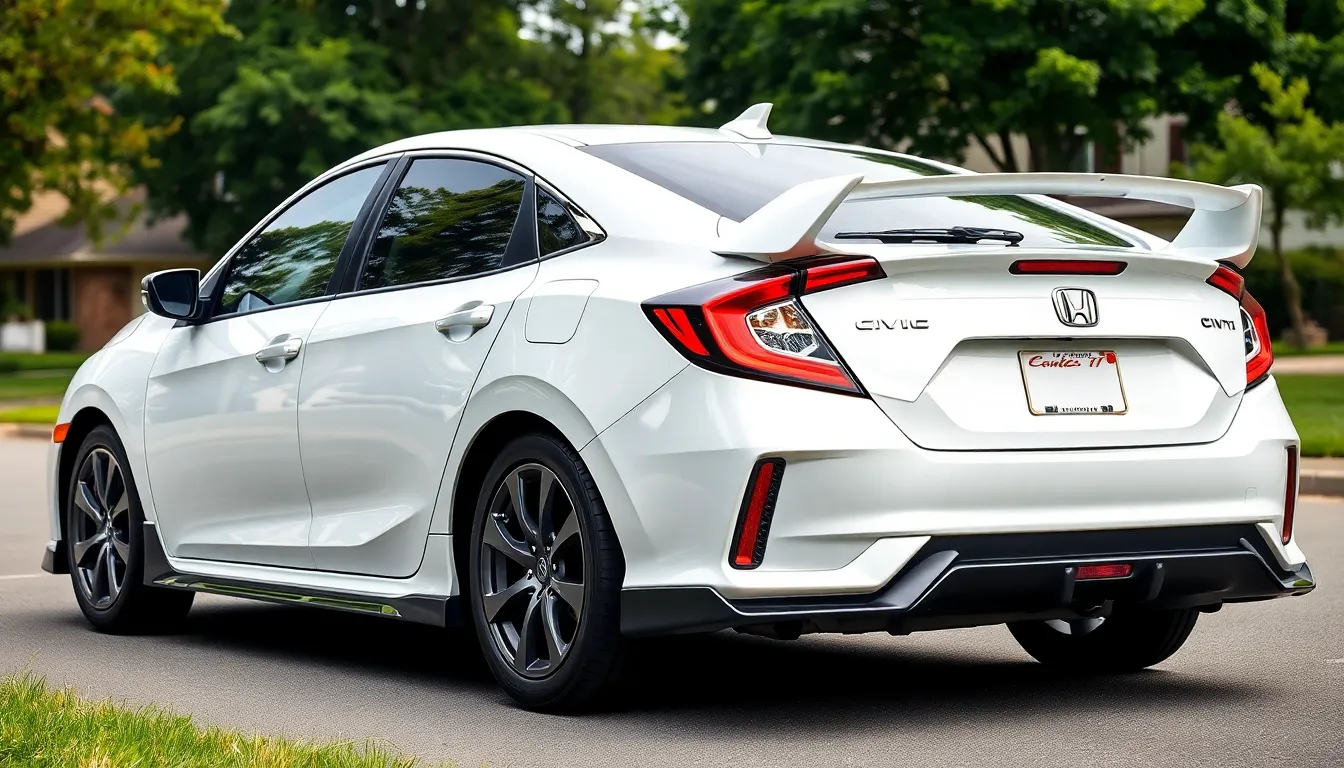
The Honda Civic EK9 has evolved into one of the most coveted Japanese performance cars in the collector market. Market demand for well-maintained examples continues to surge as enthusiasts recognize the EK9’s significance in automotive history.
Current Pricing Trends
EK9 values have experienced dramatic appreciation over the past five years, with pristine examples commanding premium prices worldwide. Low-mileage vehicles in Championship White frequently exceed $60,000 at auction houses like Bring a Trailer and Cars & Bids.
Modified examples typically sell between $25,000 and $40,000 depending on the quality of modifications and overall condition. Original unmodified cars with complete service records represent the most desirable variants, often fetching 40-50% higher prices than their modified counterparts.
Regional pricing varies significantly across global markets:
| Market | Price Range (USD) | Premium Factors |
|---|---|---|
| Japan | $20,000 – $45,000 | Mileage, condition |
| United Kingdom | $35,000 – $65,000 | Right-hand drive, originality |
| United States | $40,000 – $85,000 | Import rarity, documentation |
| Australia | $30,000 – $55,000 | Compliance costs, availability |
Mileage plays a crucial role in determining value, with sub-30,000 mile examples commanding important premiums. Cars exceeding 100,000 miles still maintain strong values above $25,000 when properly maintained and documented.
Investment Potential
EK9 appreciation rates have consistently outperformed traditional investment vehicles over the past decade. Annual value increases of 15-25% have become commonplace for exceptional examples, making the EK9 an attractive alternative investment option.
Production numbers create natural scarcity that supports long-term value growth. Honda manufactured approximately 4,223 EK9 units exclusively for the Japanese domestic market between 1997 and 2000, ensuring limited global availability.
Collector interest spans multiple generations, from original owners who experienced the EK9’s debut to younger enthusiasts discovering Honda’s Type R heritage. This broad demographic appeal strengthens market stability and reduces volatility risks.
Authentication becomes increasingly important as values rise, with original paint codes, chassis numbers, and factory documentation adding substantial premiums. Complete ownership history and maintenance records can increase an EK9’s value by $10,000-$15,000 compared to examples lacking proper documentation.
Future appreciation potential remains strong as the EK9 represents the pinnacle of naturally aspirated Honda performance engineering. Modern hot hatches cannot replicate the analog driving experience that makes the EK9 increasingly special in today’s automotive industry.
Common Issues and Maintenance
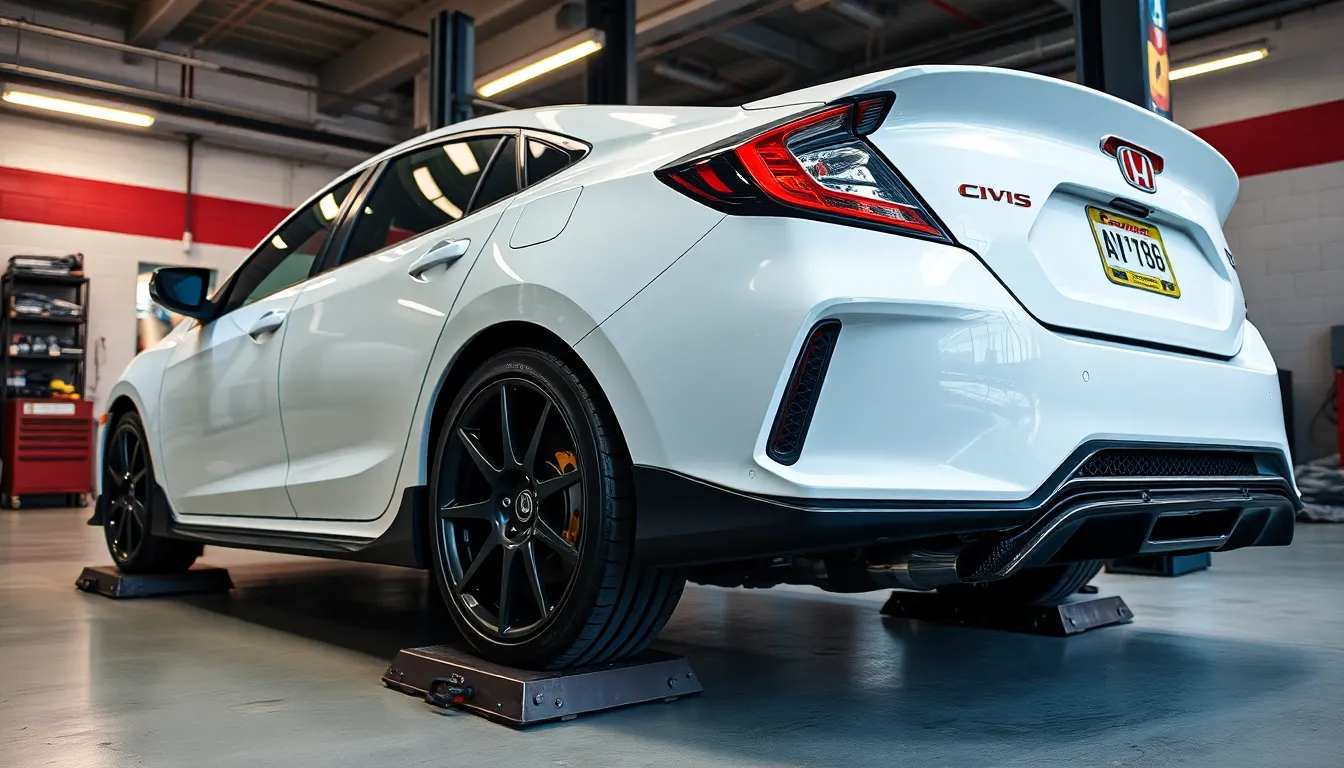
The Honda Civic EK9’s exceptional performance credentials come with exact maintenance requirements and common concerns that owners must address. Understanding these issues proves essential for maintaining the vehicle’s legendary driving dynamics and preserving its important collector value.
Known Problems to Watch For
Engine mount deterioration represents the most frequent issue affecting EK9 ownership, with the original rubber mounts typically failing between 80,000 and 120,000 miles. Symptoms include excessive engine vibration at idle and harsh shifting under acceleration. Replacement costs range from $400 to $800 depending on mount quality and labor rates.
VTEC solenoid failure occurs in approximately 15% of high-mileage examples, causing the engine to lose its signature high-RPM power delivery. Owners notice reduced performance above 6000 RPM and diagnostic codes P1259 or P1253. Genuine Honda solenoids cost $150 to $200 plus installation.
Clutch replacement becomes necessary around 60,000 to 90,000 miles due to the B16B engine’s high-revving nature and enthusiast driving patterns. The lightweight flywheel experiences more wear than standard Civic applications, with complete clutch kit replacements costing $800 to $1,200.
Suspension bushings deteriorate faster than conventional Civics due to the EK9’s track-focused setup and stiffer spring rates. Front lower control arm bushings typically require replacement every 50,000 miles, while rear beam bushings last approximately 70,000 miles. Complete bushing refresh costs $600 to $900.
Paint oxidation affects Championship White examples more severely than darker colors, particularly on the front bumper and hood areas. The single-stage paint used on some EK9s requires professional correction costing $1,500 to $3,000 for complete restoration.
| Component | Failure Rate | Replacement Interval | Cost Range |
|---|---|---|---|
| Engine Mounts | 45% by 100k miles | 80,000-120,000 miles | $400-$800 |
| VTEC Solenoid | 15% overall | Variable | $150-$200 |
| Clutch Assembly | 85% by 90k miles | 60,000-90,000 miles | $800-$1,200 |
| Suspension Bushings | 60% by 70k miles | 50,000-70,000 miles | $600-$900 |
Service and Parts Availability
Genuine Honda parts remain available through dealership networks for most EK9 components, though prices have increased significantly since production ended. Critical engine components like pistons, connecting rods, and crankshafts cost 40% more than equivalent parts for standard B16 engines. Transmission parts maintain better availability with rebuild kits costing $400 to $600.
Aftermarket suppliers provide quality alternatives for wear items including brake pads, filters, and suspension components. Spoon Sports, Mugen, and J’s Racing offer performance upgrades that exceed original specifications while maintaining reliability. These companies stock EK9-exact parts with lead times typically under 30 days.
Specialized service centers with Type R expertise charge $120 to $180 per hour for maintenance and repairs. Independent shops familiar with Honda VTEC engines often provide comparable service at $80 to $120 per hour. Regular maintenance intervals require oil changes every 3,000 miles using 5W-30 synthetic oil to protect the high-revving B16B engine.
Import costs add 25% to 35% to Japanese market parts pricing, making maintenance planning crucial for budget management. Owners commonly purchase multiple service items during single orders to reduce shipping expenses. Used OEM parts from dismantled EK9s command premium prices, often costing 60% to 80% of new part values.
Annual maintenance costs average $2,500 to $4,000 for daily driven examples, while garage-kept weekend cars require $1,500 to $2,500 yearly. These figures reflect the EK9’s high-performance nature and the premium associated with maintaining automotive collectibles in optimal condition.
Honda Civic EK9 vs Competitors
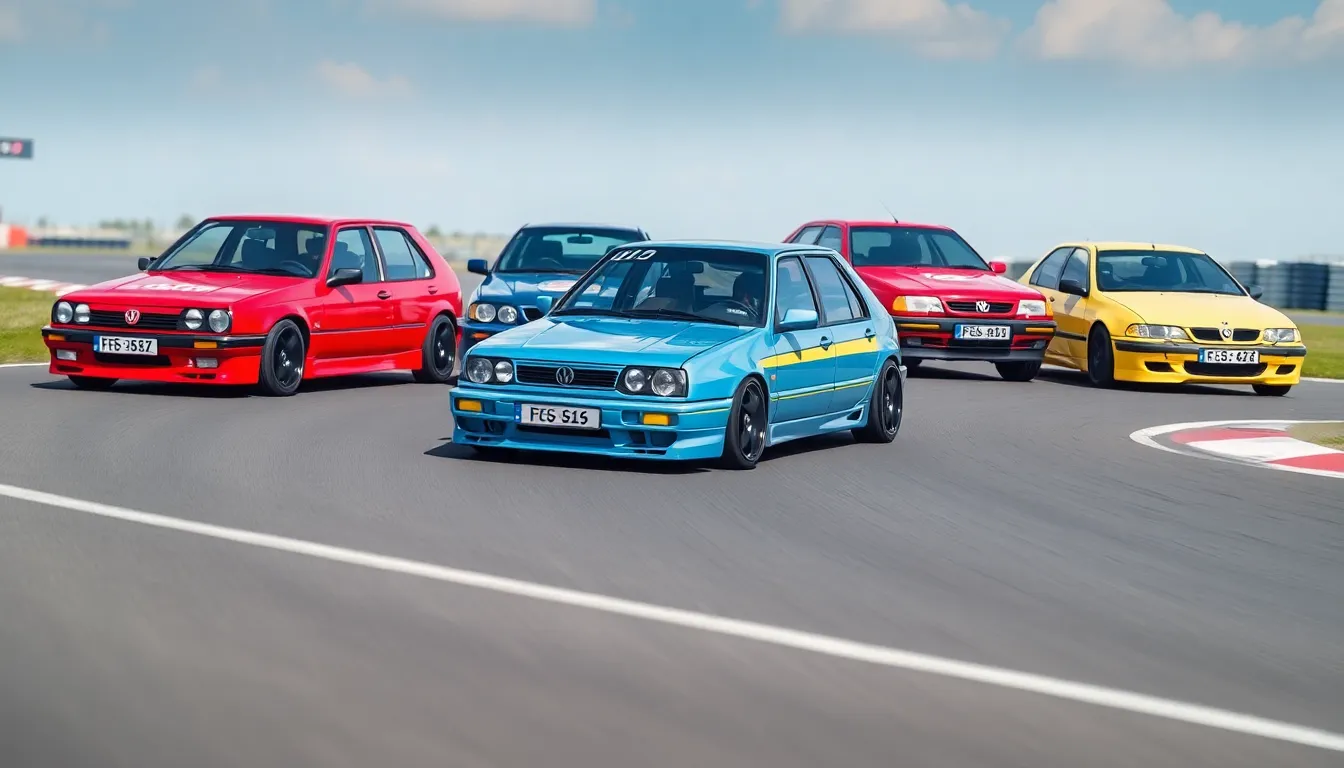
The Honda Civic EK9 faces formidable opposition from several legendary hot hatches of its era. Direct competitors include the Acura Integra Type R, Volkswagen Golf GTI Mk4, and Peugeot 306 GTI-6, each offering distinct approaches to front-wheel-drive performance.
Power and Performance Comparison
Our analysis reveals important differences in power delivery between these performance hatches:
| Vehicle | Engine | Horsepower | Torque | 0-60 mph | Top Speed |
|---|---|---|---|---|---|
| Honda Civic EK9 | 1.6L B16B VTEC | 185 hp @ 8200 RPM | 131 lb-ft @ 7500 RPM | 6.4 seconds | 149 mph |
| Acura Integra Type R | 1.8L B18C5 VTEC | 195 hp @ 8000 RPM | 130 lb-ft @ 7500 RPM | 6.1 seconds | 146 mph |
| VW Golf GTI Mk4 | 1.8L Turbo | 180 hp @ 5500 RPM | 173 lb-ft @ 1950 RPM | 6.9 seconds | 141 mph |
| Peugeot 306 GTI-6 | 2.0L XU10J4RS | 167 hp @ 6500 RPM | 142 lb-ft @ 5500 RPM | 7.2 seconds | 137 mph |
Weight Distribution and Handling Characteristics
Lightweight construction gives the EK9 a substantial advantage over its competitors. The EK9’s 1040-kilogram curb weight creates a power-to-weight ratio of 178 hp per ton, surpassing the Integra Type R’s 174 hp per ton even though the latter’s higher absolute power output. Volkswagen’s GTI weighs approximately 1270 kilograms, resulting in a less favorable 142 hp per ton ratio.
Chassis dynamics differentiate these vehicles significantly in cornering performance. The EK9’s helical limited-slip differential provides superior traction management compared to the Golf GTI’s open differential. Peugeot’s 306 GTI-6 counters with its renowned chassis balance and natural steering feel, though it lacks the EK9’s precision under extreme conditions.
Engine Characteristics and Driving Experience
Naturally aspirated engines in both Honda offerings create similar high-revving personalities that contrast sharply with turbocharged alternatives. The EK9’s B16B engine delivers its peak power at 8200 RPM, requiring drivers to maintain high engine speeds for optimal performance. Volkswagen’s 1.8T provides broader torque delivery with peak twist available from 1950 RPM, creating a more relaxed driving style.
VTEC engagement at 5800 RPM transforms the EK9’s character dramatically, unlike the Golf’s linear power delivery. This creates distinct driving personalities where the Honda rewards aggressive throttle application while the German alternative suits varied driving conditions.
Interior and Practicality Considerations
Practicality sacrifices separate the EK9 from mainstream competitors like the Golf GTI. Honda’s stripped interior eliminates rear seats, sound deadening, and air conditioning to achieve weight targets. The Volkswagen maintains full seating capacity and comfort features, appealing to buyers seeking daily usability alongside performance.
Recaro bucket seats in the EK9 provide superior lateral support during spirited driving compared to the GTI’s conventional sport seats. But, the German model offers adjustable seating positions and easier entry for passengers.
Market Positioning and Target Audience
Track-focused buyers gravitate toward the EK9’s uncompromising design philosophy. The vehicle appeals to enthusiasts prioritizing pure driving experience over versatility. Volkswagen’s GTI targets a broader audience seeking performance without important comfort penalties.
Collector interest varies dramatically between these models, with the EK9 commanding premium prices due to limited production numbers. Current market values show pristine EK9 examples reaching $60,000, while comparable Integra Type Rs trade for $40,000 to $50,000. Golf GTI Mk4 models remain accessible at $15,000 to $25,000 for excellent examples.
Racing Heritage and Motorsport Success
Honda’s Type R program originated from touring car racing, with the EK9 incorporating lessons from championship-winning race cars. The vehicle’s aerodynamic package and suspension tuning reflect direct motorsport influence. Volkswagen’s GTI heritage stems from rally competition, though the Mk4 generation moved toward road-focused development.
Peugeot’s 306 GTI-6 emerged from the brand’s successful rally programs, incorporating wide-track suspension geometry and precise steering calibration from competition experience. This motorsport DNA creates distinct handling characteristics that some enthusiasts prefer over the Honda’s track-focused setup.
Conclusion
The Honda Civic EK9 stands as a testament to Honda’s engineering excellence and their unwavering commitment to pure driving pleasure. We’ve witnessed how this remarkable machine has transcended its role as merely a performance car to become a cultural icon that continues to inspire automotive enthusiasts worldwide.
Today’s automotive industry may offer more power and advanced technology but few vehicles can match the EK9’s soul-stirring character. The combination of its naturally aspirated B16B engine screaming to 8400 RPM the precise chassis dynamics and the uncompromising focus on weight reduction creates an experience that modern hot hatches struggle to replicate.
For those fortunate enough to own or drive an EK9 they’re not just experiencing Honda’s Type R philosophy at its purest – they’re participating in automotive history. Whether viewed as a weekend track weapon a collector’s investment or simply the ultimate expression of the hot hatch formula the EK9 remains genuinely special in ways that extend far beyond mere specifications.
Frequently Asked Questions
What is the Honda Civic EK9?
The Honda Civic EK9 is a legendary hot hatch released in 1997, representing Honda’s Type R philosophy. It features a lightweight design, powerful B16B engine, and stripped-down interior focused purely on performance. The EK9 is considered a cult favorite among car enthusiasts and embodies Honda’s commitment to creating an uncompromising driving machine that elevates everyday driving to an exhilarating experience.
What engine does the Honda Civic EK9 have?
The EK9 is powered by a 1.6-liter B16B naturally aspirated VTEC engine producing 185 horsepower at 8200 RPM. This all-aluminum, dual overhead cam engine features Honda’s Variable Valve Timing and Lift Electronic Control system with a redline of 8400 RPM. The high-revving nature and linear power delivery create an addictive driving experience that turbocharged alternatives cannot replicate.
How much does the Honda Civic EK9 weigh?
The Honda Civic EK9 weighs just 1040 kilograms (2,293 pounds), which is 50 kilograms lighter than the standard Civic hatchback. This lightweight construction results in an exceptional power-to-weight ratio of 178 horsepower per ton. The weight reduction was achieved through stripped interior components, lightweight materials, and Honda’s uncompromising dedication to pure performance over comfort features.
What makes the Honda Civic EK9 special?
The EK9’s specialness lies in its uncompromising dedication to pure performance. Key features include its lightweight construction, high-revving B16B engine, precision handling dynamics with helical limited-slip differential, racing-inspired aerodynamics, and performance-focused interior with Recaro bucket seats. The combination creates a direct connection between driver and vehicle that remains unmatched by modern hot hatches.
How much is a Honda Civic EK9 worth today?
Pristine Honda Civic EK9 examples can command prices exceeding $60,000, while modified versions typically range from $25,000 to $40,000. The EK9 has seen annual appreciation rates of 15-25%, making it an attractive investment. Value depends heavily on mileage, condition, documentation, and ownership history, with low-mileage cars fetching significant premiums in the collector market.
What are common Honda Civic EK9 maintenance issues?
Common EK9 maintenance concerns include engine mount deterioration, VTEC solenoid failure, clutch replacement needs, and suspension bushing wear. Regular maintenance is crucial for preserving performance and collector value. Genuine Honda parts availability varies, with aftermarket alternatives available. Maintenance costs differ significantly between daily-driven examples and garage-kept collector cars, with proper care being essential for long-term reliability.
How does the Honda Civic EK9 compare to competitors?
Compared to rivals like the Acura Integra Type R, Volkswagen Golf GTI Mk4, and Peugeot 306 GTI-6, the EK9 offers superior power-to-weight ratio and traction management. Its naturally aspirated high-revving personality stands out against turbocharged alternatives. While less practical than the Golf GTI due to its stripped interior, the EK9 excels in track-focused performance and collector appeal.
What colors was the Honda Civic EK9 available in?
The Honda Civic EK9 was available in distinctive colors including the signature Championship White, Milano Red, and Starlight Black Pearl. Special edition models featured unique color combinations that are highly desirable among collectors today. Honda’s meticulous paint application process ensured durability during track use, with the Championship White being particularly iconic and sought-after in the collector market.
Is the Honda Civic EK9 good for daily driving?
While the EK9 can be daily driven, its track-focused nature compromises comfort and practicality. The stripped interior offers minimal storage, Recaro bucket seats prioritize support over comfort, and the firm suspension setup favors handling over ride quality. The unassisted hydraulic steering and high-revving engine characteristics make it more demanding than modern cars, though incredibly rewarding for driving enthusiasts.
What is the Honda Civic EK9’s racing heritage?
The EK9 embodies Honda’s Type R racing philosophy, developed from Honda’s motorsport experience in the 1990s. Its lightweight construction, advanced chassis engineering, and naturally aspirated VTEC technology reflect racing-derived principles. The car’s design prioritizes track performance with features like the helical limited-slip differential, racing-inspired aerodynamics, and precision handling dynamics that translate directly from Honda’s competitive racing programs.

